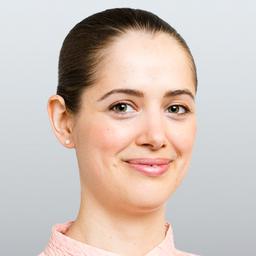If you’ve been reading Dr. Gifford-Jones’s column in the Epoch Times, you’ve certainly heard him recommend vitamin C and lysine. We asked him to explain why, and as it turns out, it’s a recommendation he bet his life on. Answers have been edited for content and clarity.
Epoch Times: Why do you recommend vitamin C and lysine?
Dr. W. Gifford-Jones: The quick answer is I believe high doses of vitamin C and lysine saved my life 16 years ago, following a heart attack and bypass surgery.
Several cardiologists said I was crazy to refuse cholesterol-lowering drugs (CLDs), and without them, I'd die in a couple of years. But I bet my life on the research behind vitamin C and lysine. Now 16 years later, at 90 years of age, it has proved to be a wise decision.
Epoch Times: Why did you think that taking vitamin C and lysine would help your condition?
Dr. Gifford-Jones: Dr. Linus Pauling, two-time Nobel Prize-winner, showed that animals such as dogs make 5,000 milligrams of vitamin C daily. They increase it to 100,000 milligrams daily if injured or if they develop an infection, but humans make none due to a genetic mutation that occurred eons ago.
Vitamin C is needed for the formation of collagen, the glue that holds coronary cells together. A lack of vitamin C causes cracks to occur in the coronary wall, where a blood clot forms, often causing death. But it was Dr. Sydney Bush, an English researcher, who finally proved that Pauling was right.
Epoch Times: How did Bush do this?
Dr. Gifford-Jones: Dr. Bush, an optometrist, worried that some of his patients using contact lenses were developing eye infections. He was aware of the research done by Pauling and decided to give patients 6,000 milligrams of vitamin C and 4,000 milligrams of lysine to see if this combination decreased this risk. Luckily, he took photos of the patient’s retinas before starting C and lysine and then again one year later.
To his surprise, he discovered this combination not only prevented blocked coronary arteries, but was also reversing the condition. This is a monumental scientific discovery, as it can save millions from dying of heart attack, the No. 1 killer.
Epoch Times: What’s the timeline in which people notice changes after taking vitamin C and lysine?
Dr. Gifford-Jones: It’s a gradual, continuing process. Dr. Bush has seen changes in arteries in six months. The longest follow-up is 16 years. You can see these before-and-after photos on my website, www.docgiff.com. You don’t have to be a doctor to see the dramatic change.
Epoch Times: How safe is this combination?
Dr. Gifford-Jones: Very safe, as both are natural remedies. We all get vitamin C and lysine in our diet, but not enough to prevent coronary attack. So this combination increases C and lysine to make an effective dose.
In fact, Dr. Frederick Klenner [1952–1984, an American medical researcher with a practice in North Carolina] discovered years ago that you can safely give as much as 250,000 milligrams of C intravenously for several days to cure viral infections such as meningitis, polio, encephalitis, and measles. Unfortunately, the medical profession is largely unaware of this research.
Epoch Times: How much vitamin C and lysine do you take?
Dr. Gifford-Jones: I take 10,000 milligrams of vitamin C and 6,500 of lysine. Why? Because before I knew 6,000 milligrams [of vitamin C] was OK for someone who had had a heart attack or a history of cardiovascular problems, I had to make a decision. I knew that Dr. Pauling took 20,000 milligrams daily, and I decided to cut it in half. Having survived 17 years on this dose, I hate to change it.
Epoch Times: How do you take such large amounts?
Dr. Gifford-Jones: Initially I swallowed 20 vitamin C pills and 10 lysine pills every day and got tired of the routine. I finally persuaded a pharmaceutical company to make a powder called Medi-C Plus. One scoop contains 2,000 milligrams of vitamin C and 1,300 milligrams of lysine. I take one scoop with each meal with either water or orange juice. For those without a cardiovascular problem, one scoop twice a day is recommended.
Epoch Times: Is there any toxicity or overdose risk with vitamin C and lysine?
Dr. Gifford-Jones: There is no toxicity. We know that viral diseases can be cured by taking up to 500,000 milligrams of vitamin C intravenously without harm. Lysine is also non-toxic, but there is no need to use more than 6,500 milligrams.
Epoch Times: Is Medi-C Plus different from other vitamin supplements? And why the lysine?
Dr. Gifford-Jones: People who don’t mind swallowing 30 pills can get the same result by taking vitamin C and lysine tablets. Lysine is a natural amino acid. It strengthens the arterial wall, just like steel rods give increased strength to concrete. A strong artery is less likely to rupture, causing a stroke.
Epoch Times: How long do you have to take Medi-C Plus?
Dr. Gifford-Jones: It’s a lifetime treatment, as humans will never produce their own vitamin C or lysine. If you take this combination for a few months and stop, it’s a waste of money.
Epoch Times: Too much vitamin C can cause diarrhea.
Dr. Gifford-Jones: That’s right, as vitamin C is the perfect natural laxative. If diarrhea develops on this program, you just decrease the dose to bowel tolerance.
Epoch Times: Can people take vitamin C while on CLDs?
Dr. Gifford-Jones: People can take Medi-C Plus along with CLDs. I never tell people to stop CLDs, as this is a decision to be made with their doctor.
I believe history will show that subjecting millions of people to CLDs is an unmitigated disaster. It’s a prime example of how “marketing 101” can make billions for pharmaceutical companies for questionable reasons.
If doctors would only look at the before-and-after pictures on my website, they could save countless lives. But they have been brainwashed into believing that CLDs are the be-all-and-end-all to prevent heart attack.






